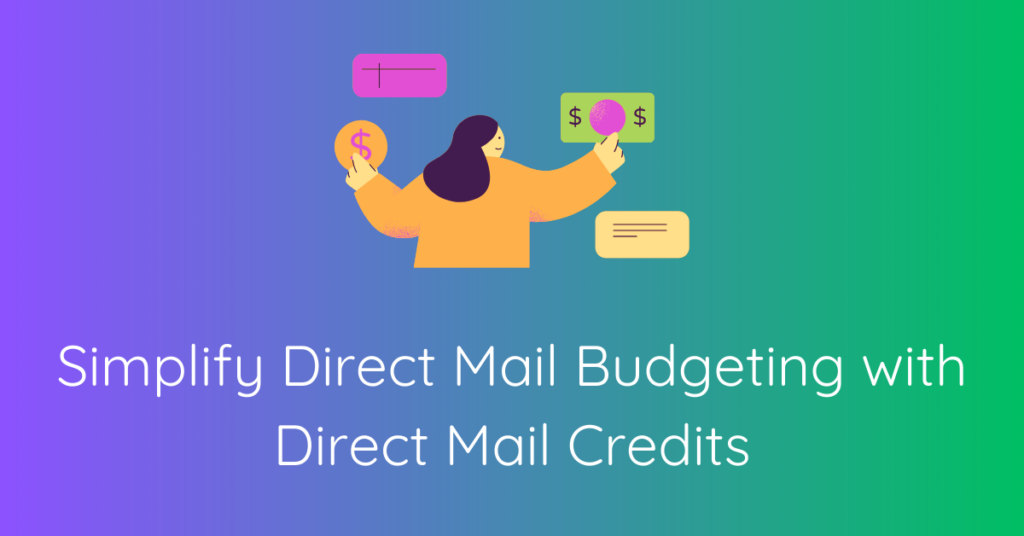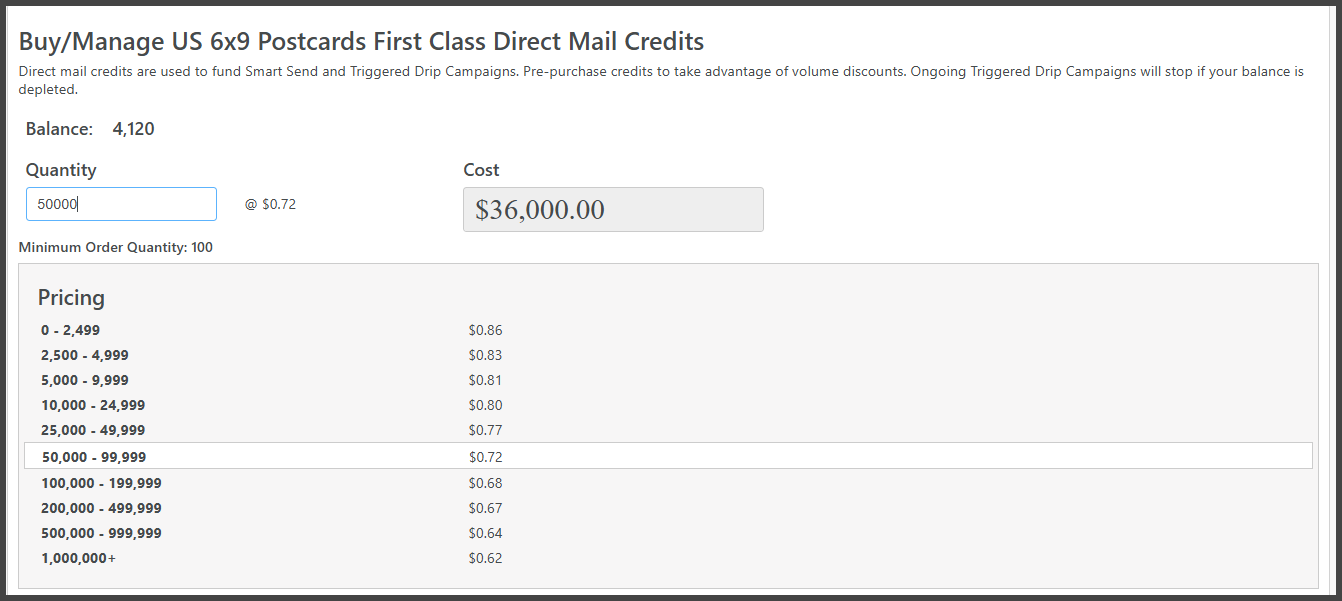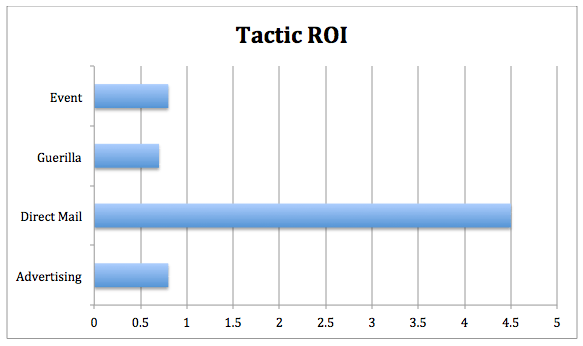Direct mail remains a powerful marketing channel, but managing campaign budgets and tracking return on investment can be challenging. One innovative solution that’s transforming direct mail budgeting is the use of direct mail credits – a system that helps marketers streamline costs, simplify accounting, and measure campaign performance more effectively.

The Challenges of Traditional Direct Mail Budgeting
Traditional direct mail budgeting presents numerous challenges that can frustrate even experienced marketers. When each campaign is priced separately, organizations face several common obstacles:
Variable Pricing Fluctuations: Paper costs, postage rates, and printing fees can change dramatically between campaigns, making it difficult to maintain consistent budgets. A campaign that cost $5,000 one month might cost $6,500 the next, even with identical specifications.
Complex Vendor Management: Most direct mail campaigns require coordinating with multiple vendors – designers, printers, mail houses, and postal services. Each vendor has their own pricing structure, minimum orders, and billing cycles, creating a web of financial relationships to manage.
Hidden Costs and Fees: Traditional campaigns often come with unexpected charges such as setup fees, address verification surcharges, or rush handling costs. These hidden expenses can quickly derail carefully planned budgets and diminish campaign ROI.
Time-Consuming Quote Process: Getting accurate quotes for each campaign requires extensive back-and-forth with vendors, often delaying campaign launches and consuming valuable marketing resources. This process must be repeated for every campaign, regardless of similarity to previous efforts.
Inconsistent Volume Discounts: Without a standardized pricing system, negotiating volume discounts becomes complicated. Organizations may miss out on savings opportunities or fail to achieve consistent pricing across campaigns.
What Are Direct Mail Credits?

Direct mail credits function as a prepaid system for direct mail campaigns, similar to how digital advertising platforms handle media spending. Instead of dealing with variable costs for each campaign, marketers can purchase credits upfront and draw from their balance as needed. This approach brings several advantages to direct mail budgeting and campaign management.
How Direct Mail Credits Simplify Budgeting
Traditional direct mail budgeting involves juggling multiple cost variables: design, printing, postage, and handling fees. Each element typically requires separate vendor relationships and billing cycles, making it difficult to maintain accurate budget forecasts. Mail credits consolidate these costs into a single, predictable unit.
When planning campaigns, marketers can quickly calculate total costs by multiplying the number of pieces by the credit cost per piece. This transparency eliminates surprising fees or hidden charges that often plague direct mail campaigns. More importantly, it allows marketing teams to:
- Allocate budgets with greater precision
- Avoid overspending on individual campaigns
- Maintain consistent cash flow throughout the year
- Reduce time spent on vendor management and accounting
Cost Control and Optimization
Direct mail credits provide unprecedented control over direct mail spending. Marketing teams can set clear limits on campaign budgets by allocating specific numbers of credits to different initiatives. This granular control helps prevent cost overruns and ensures campaigns stay within prescribed budgets.
The system also enables more strategic purchasing decisions. Organizations can buy credits in bulk when prices are advantageous, potentially securing significant discounts. This approach to direct mail budgeting helps stabilize costs and protect against market fluctuations in paper, printing, or postage rates.
Streamlined ROI Calculations
Perhaps the most valuable aspect of direct mail credits is how they simplify return on investment calculations. With traditional direct mail campaigns, calculating true ROI requires gathering cost data from multiple sources and accounting for various fees and surcharges. Mail credits consolidate all costs into a single metric, making ROI calculations straightforward and accurate.

For example, if a campaign uses 10,000 credits at $0.75 per credit, marketers know immediately that their total cost is $7,500. When tracking campaign results, they can easily divide revenue by this fixed cost to determine ROI. This clarity helps:
- Compare performance across different campaigns
- Make data-driven decisions about future investments
- Justify direct mail spending to stakeholders
Better Budget Planning and Forecasting – Predictability
Mail credits transform direct mail budgeting from a complex estimation process into a precise science. Marketing teams can plan campaigns months in advance, knowing exactly how many credits they’ll need and what they’ll cost. This predictability enables:
- More accurate annual budget planning
- Better allocation of marketing resources
- Improved campaign scheduling and timing
- Reduced financial risk
Integration with Marketing Attribution
Modern direct mail platforms that use credit systems often integrate with marketing attribution tools, providing deeper insights into campaign performance. Marketers can track how direct mail campaigns influence online behavior, store visits, and phone calls, creating a comprehensive view of ROI across channels.
This integration helps organizations understand the true value of their direct mail investments and make more informed decisions about budget allocation across their marketing mix.
Implementing a Direct Mail Credit System
To leverage mail credits effectively for direct mail budgeting, organizations should:
- Evaluate historical campaign costs to establish baseline credit needs
- Identify seasonal patterns in direct mail activity to plan credit purchases
- Set up tracking systems to monitor credit usage across campaigns
- Develop clear processes for allocating credits to different marketing initiatives
- Regularly review credit usage and campaign performance to optimize spending
Direct Mail Budgeting Makes More Sense with Credits
As marketing budgets face increased scrutiny, the ability to manage direct mail costs efficiently becomes more critical. Mail credits provide the transparency, control, and simplicity needed to run successful direct mail campaigns while maintaining strict budget oversight.
By embracing mail credits, marketing teams can transform direct mail budgeting from a complex challenge into a strategic advantage. The resulting improvements in cost management, ROI tracking, and campaign optimization make direct mail a more attractive channel for organizations seeking measurable marketing results.
When evaluating direct mail partners, look for platforms that offer flexible credit systems, robust tracking capabilities, and seamless integration with existing marketing tools. These features will help maximize the benefits of mail credits while simplifying your direct mail budgeting process.
About the Author

Dennis Kelly
Dennis Kelly is CEO and co-founder of Postalytics, the leading direct mail automation platform for marketers to build, deploy and manage direct mail marketing campaigns. Postalytics is Dennis’ 6th startup. He has been involved in starting and growing early-stage technology ventures for over 30 years and has held senior management roles at a diverse set of large technology firms including Computer Associates, Palm Inc. and Achieve Healthcare Information Systems.
